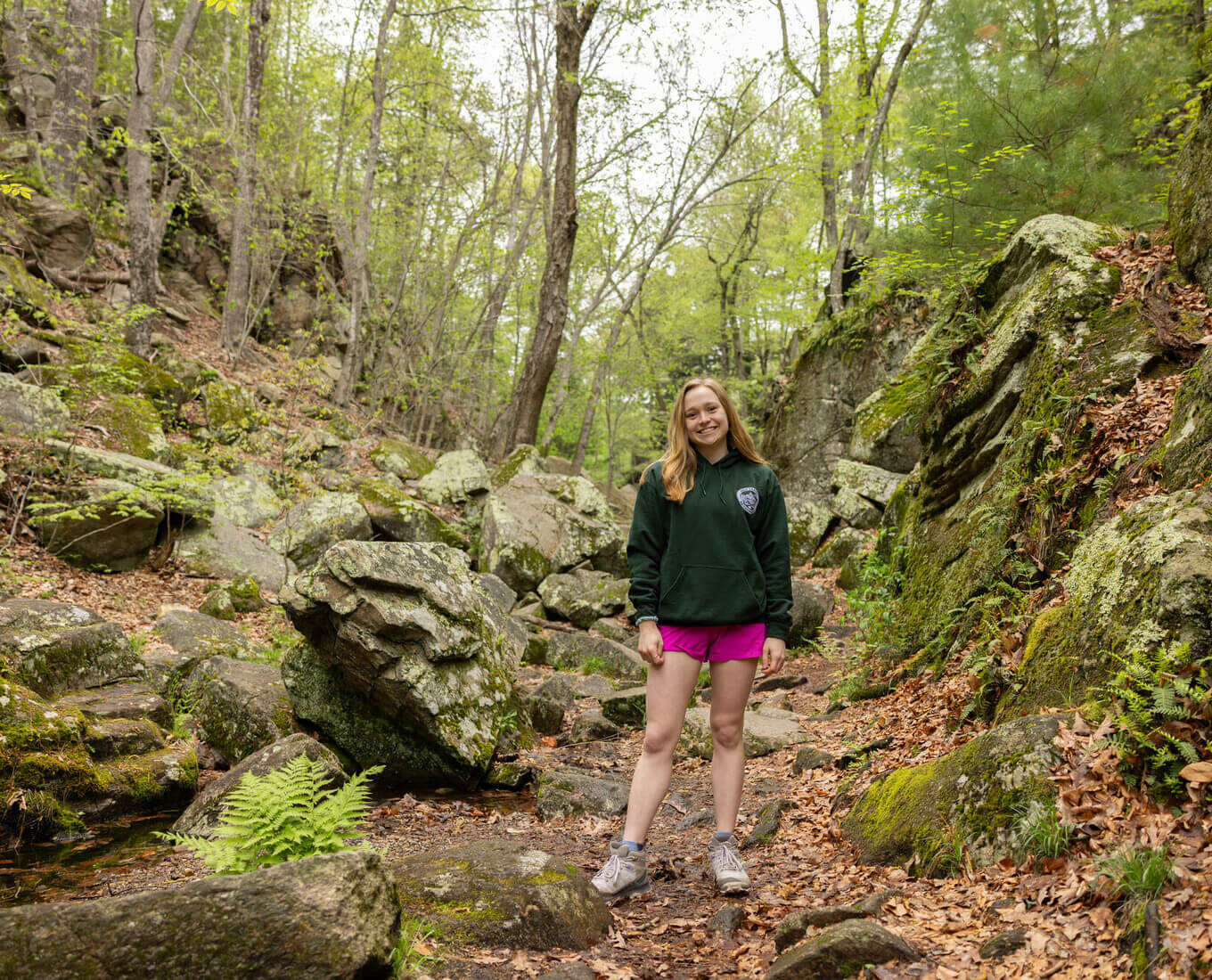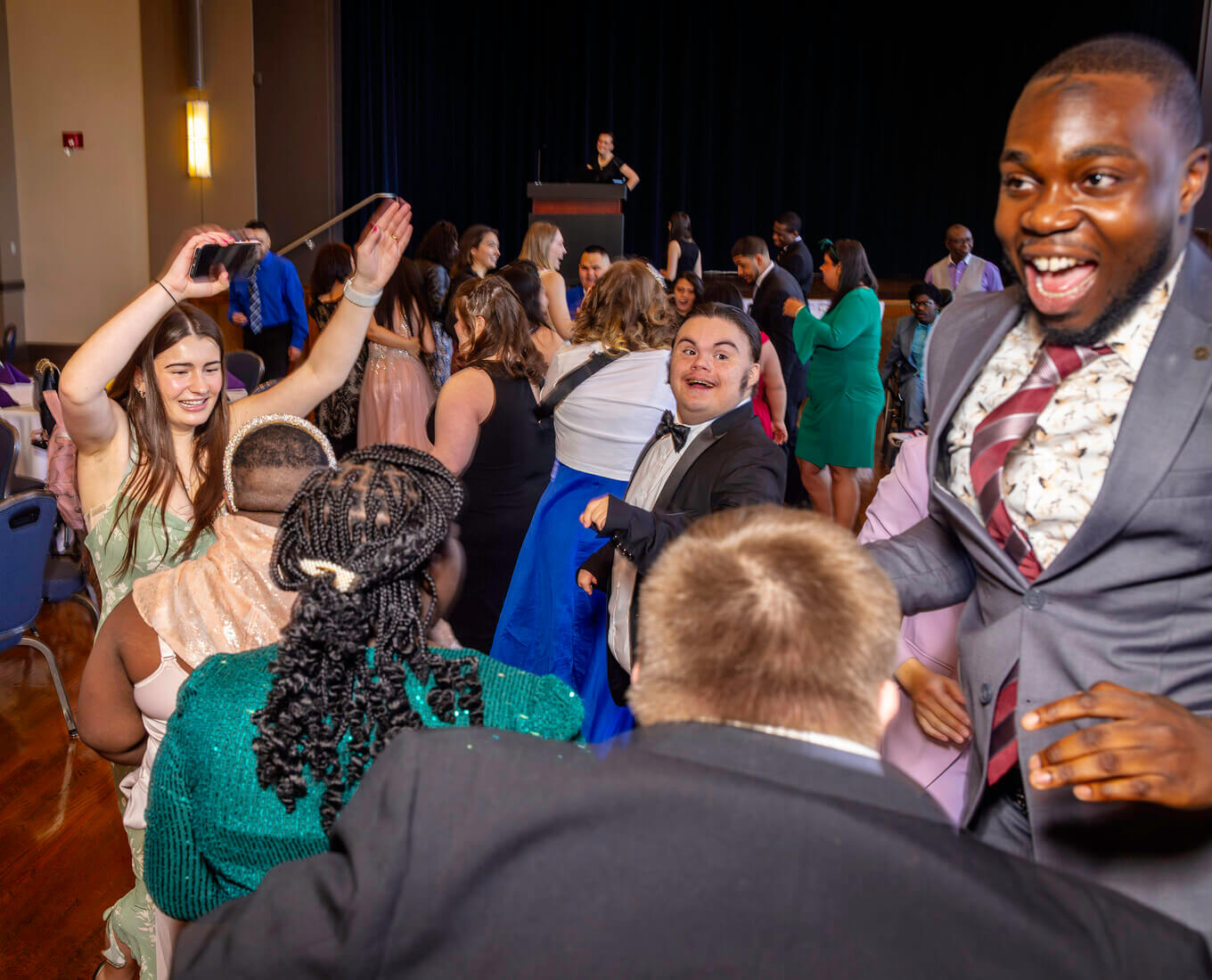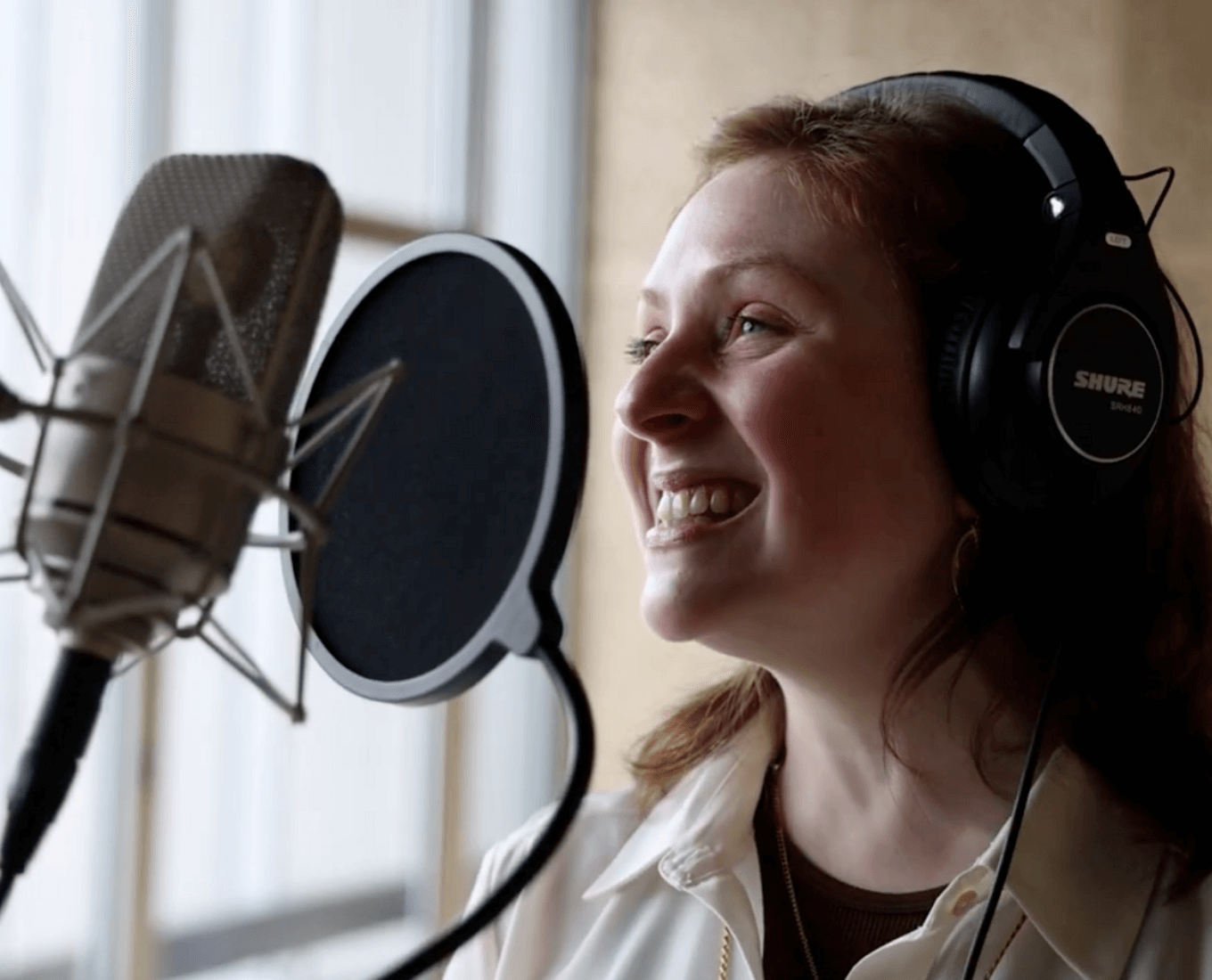
From researching fruit flies to reimagining the first commercially successful color film, College of the Holy Cross faculty members are making massive contributions to their fields — and to their classrooms. Hear a bit more from the 10 newly tenured professors below.
Oliver de la Paz, English
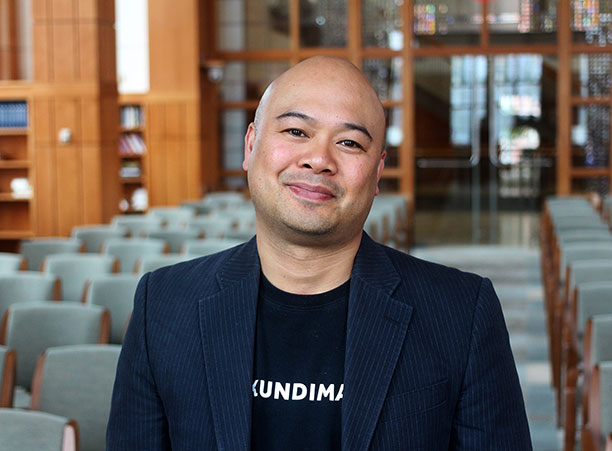
Oliver de la Paz, of the English department, earned a B.S. in biology and a B.A. in English from Loyola Marymount University, as well as an M.F.A. in creative writing from Arizona State University. His research focuses on poetry and hybrid genres, contemporary American poetry and Asian American literature. He has been a member of the Holy Cross faculty since 2016.
What are you working on now? A hybrid book of prose poems and questionnaires of mine will be published by the University of Akron Press and is forthcoming this summer. I'm also working on a documentary poem about dictators, violence and the camera.
You've written a number of books of poetry. In what place (either on campus or beyond) do you find you do your best writing? I do my best writing when I have time to do my best reading. I also do my best writing in places without scenery, like a closet or a corner. I can't have any sensory distractions. I tend to play droning music without lyrics while I write. I try to construct a sensory cocoon.
Daniel DiCenso '98, music

Dan DiCenso, of the music department, earned a B.A. in music from College of the Holy Cross, an M.A. in music, an M.S. in education, and a Ph.D. in education from the University of Pennsylvania, an M.A. in classical studies from Villanova University, and a Ph.D. in musicology from the University of Cambridge. His research focuses on medieval liturgy, with an interest in the history of Gregorian chant during the eighth and ninth centuries. He has been a member of the Holy Cross faculty since 2008.
What are you working on now? I'm finishing work on an article about an overlooked, ninth-century manuscript in Monza, Italy. The manuscript is a missing link of sorts, giving evidence of the Gregorian repertory in Italy at a time when witnesses to chant of this kind are scarce.
You've taught some hybrid courses over the years, like Music & Gay Rights and Music & the Jesuits. What do you think the value is of these hybrid music courses? The wonderful thing about teaching music is that music is not extractable from its cultural and social context. It simply cannot be done. In this way, music serves as an excellent excuse to learn just about anything you want to know about. Want to learn about the Gay Rights Movement? You can learn about it through music. Want to understand politics and power in the Middle Ages? You can learn about it through music. Want to learn about the social and cultural impact of the Jesuit order? You can learn about it through music.
Geoffrey Findlay, biology
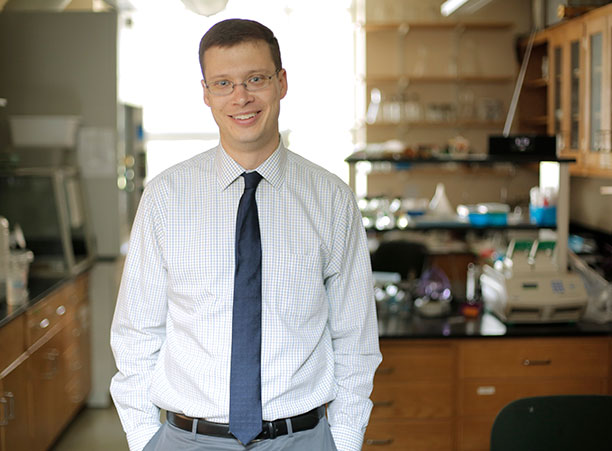
Photo by Tom Rettig
Geoffrey Findlay, of the biology department, earned a B.A. in biology from Carleton College and a Ph.D. in genome sciences from the University of Washington. His research focuses on the function and evolution of reproductive proteins in Drosophila fruit files. He has been a member of the Holy Cross faculty since 2013.
What are you working on now? My students and I are working on two main projects. In one, we are using fruit flies to study the function of a gene that our collaborators at UMass Medical School have shown is important for mammalian sperm movement. The other project looks at genes at the opposite end of the age spectrum. Typically, the older a gene is, the more important its function, but we've found at least three examples of young genes that have quickly become essential for fertility.
Why should students be interested in researching Drosophila fruit files? Flies are one of the few animal model systems where you can proceed through six or seven generations during the course of a single semester, which means you can perform a lot of experiments quickly. I think students like being able to do both organismal and molecular work: you can be examining flies under the microscope and watching their behaviors in the morning, then analyzing or cloning their DNA after lunch.
Selina Gallo-Cruz, sociology
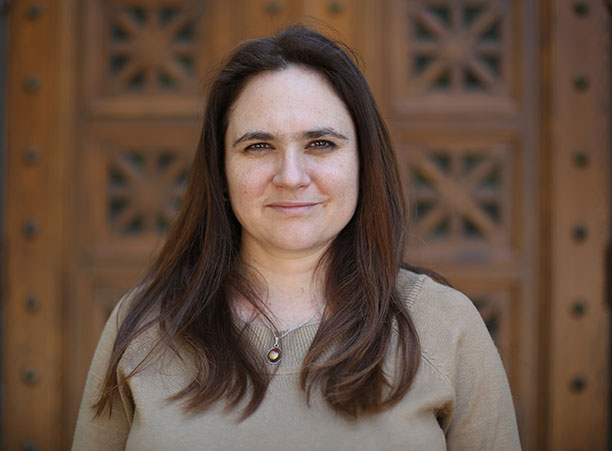
Photo by Tom Rettig
Selina Gallo-Cruz, of the sociology department, earned a B.A. in sociology from Wellesley College and an M.A. and Ph.D. in sociology from Emory University. Her research focuses on culture, gender, global change, NGOs, nonviolence methods, social movements and theory. She has been a member of the Holy Cross faculty since 2013.
What are you working on now? Currently, I am finishing my manuscript on women's peace movements during civil wars in Argentina, Yugoslavia and Liberia. I am also developing two projects with Holy Cross students on women's activism against domestic violence. In one project, we consider the strength and limitations of nonviolent tactics in resisting sexual assault and rape culture. In another, we have documented the contentious discourse surrounding different approaches to domestic violence activism.
You've come to Holy Cross by way of Atlanta — what's your favorite thing about Worcester? Worcester is a vibrant city of people with roots from many different parts of the world. I love the community here and the mix of culture. We have so many dedicated social justice advocates in the city, an admirable history of activism and community-oriented scholarship, a vibrant arts scene, and many opportunities for my children to learn and grow. One of the biggest perks of working at Holy Cross has been connecting my classroom to all that is happening in Worcester. I loved working with students to collect women peace activist biographies for the Worcester Women's History Project, for example.
Matthew Gamber, visual arts
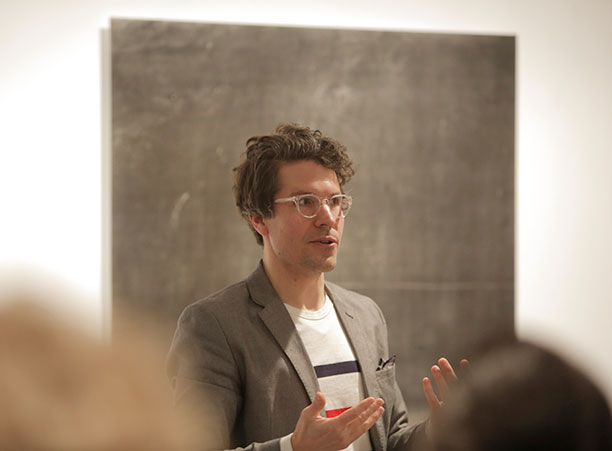
Photo by Tom Rettig
Matthew Gamber, of the visual arts department, earned a B.F.A. in two-dimensional studies from Bowling Green State University and an M.F.A. in studio art from Tufts University with a focus on photography and printmaking. His research interests include the history of print media and the origins of color photography. He has been a member of the Holy Cross faculty since 2014, having previously taught at Holy Cross during the 2008-2009 academic year.
What are you working on now? One of my current projects, Lost Color of God and Man, is inspired by the color photography experiments of Leopold Godowsky Jr. and Leopold Mannes. They were both musicians and amateur scientists that developed the first commercially successful color film, Kodachrome. I have been reinterpreting their early tests as projections and sculptures to demonstrate how their experiments changed the way we experience color.
Your work has been featured in a number of exhibitions over the years. Is there an exhibit that stands out as being especially meaningful to you? A few years ago, I was invited to propose new work for a solo exhibition at The Neon Heater Gallery in Findlay, Ohio. The gallery is a nationally recognized project space for experimental installation, and it happens to be a short drive away from my hometown. The show was a rare opportunity to share an aspect of my professional life with my family.
Ji Hao, modern languages and literatures
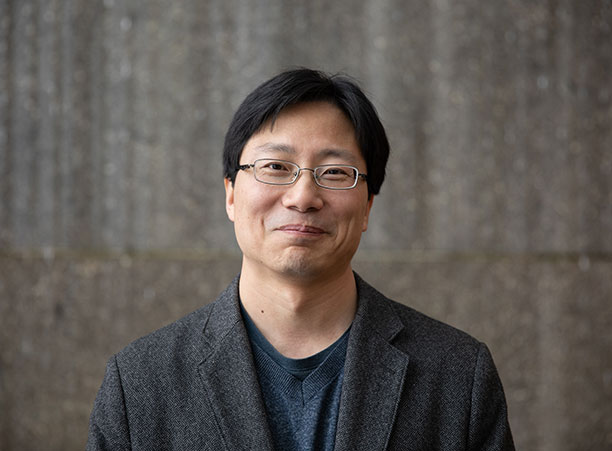
Photo by Avanell Brock
Ji Hao, of the modern languages and literatures department, earned a B.A. in Chinese language and literature from Renmin University of China, an M.A. in Chinese literature from the University of Southern California and a Ph. D. in Chinese literature from the University of Minnesota. His research focuses on Chinese language and literature. He has been a member of the Holy Cross faculty since 2012.
What are you working on now? I am currently working on the formation and development of the Xiyou ji (Journey to the West) tradition in pre-modern China, which is associated with a Chinese Buddhist monk Xuanzang and his well-known pilgrimage to India in the seventh century. There are some notable gaps in our knowledge of the evolution of this tradition. My project seeks to launch a systematic investigation of the formation and development of the Xiyou ji tradition in pre-modern China.
You recently published an article about a newly discovered sculpture at the Worcester Art Museum — can you tell us more about the discovery? A few years ago, I saw a beautiful Buddhist sculpture when I visited the Worcester Art Museum. The sculpture was labeled as "Kwan Yin seated in a grotto." At that time, I began to teach the novel "Journey to the West" in my traditional Chinese literature class. In the novel, Kwan Yin served as an important protector of the Buddhist pilgrims. I paid close attention to the sculpture, which had never been mentioned in previous scholarship on "Journey to the West." Whenever I teach the novel now, I take my students to the museum and see the sculpture.
Alvaro Jarrin, anthropology
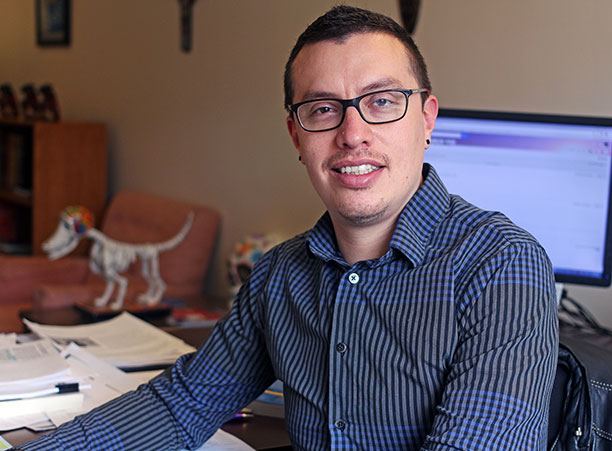
Photo by Austin Bosworth '18
Alvaro Jarrin, of the anthropology department, earned a double B.A. in English and anthropology from Williams College and an M.A. and Ph.D. in cultural anthropology from Duke University. His research focuses on medical anthropology, science and technology studies, race, class and gender inequality in Latin America, queer theory, social justice and the social construction of beauty. He has been a member of the Holy Cross faculty since 2014.
What are you working on now? My new research project investigates how gender-nonconforming individuals in Brazil negotiate the multiplying categories that interpellate them, particularly as globalized terms like "transgender" take hold in Brazil, and the unexpected ramifications of these complex politics of naming. The Brazilian context is particularly interesting because the new government is openly LGBT-phobic, making activism in this area particularly urgent and creating a situation where the recognition of some identities over others is particularly fraught.
You've done a fair amount of research in Brazil, and have written extensively about the country. What importance does the country have to you? Brazil is one of the most unequal countries in the world and its democracy is currently very fragile, yet I am always struck by the hopefulness of the most vulnerable in the face of extreme injustice. Brazilians are survivors and we have so much to learn from Brazilian activists and their hunger to make a difference despite severe obstacles.
Denis Kennedy, political science
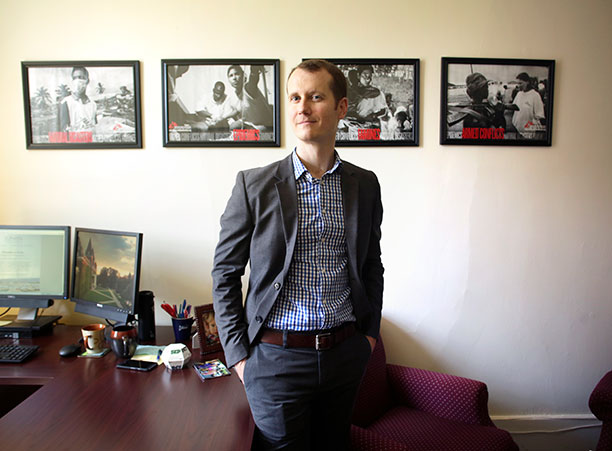
Photo by Tom Rettig
Denis Kennedy, of the political science department, earned a triple B.A. in international relations, political science and French from Bucknell University and an M.A. and Ph.D. in political science from the University of Minnesota. His research focuses on international relations theory, global governance, NGOs and humanitarianism. He has been a member of the Holy Cross faculty since 2013.
What are you working on now? I'll be spending my sabbatical researching "do it yourself" international nongovernmental organizations, building on summer research I conducted with François Venne '19. In studying these organizations, I seek to investigate and critically assess the implicit assumption in the literature that professionalism equates to better practice, and to scrutinize the north-south relationships facilitated by amateur aid.
What advice would you give to someone wanting to get better versed in today's politics? Read credible, varied news sources — and do so consistently. Stories generally develop slowly, so if you've made the initial investment to bring yourself up to speed on an issue, it's much easier to stay current. In addition to American outlets, broaden your perspective with international journalism and, if possible, practice your language skills.
Elizabeth Landis, chemistry
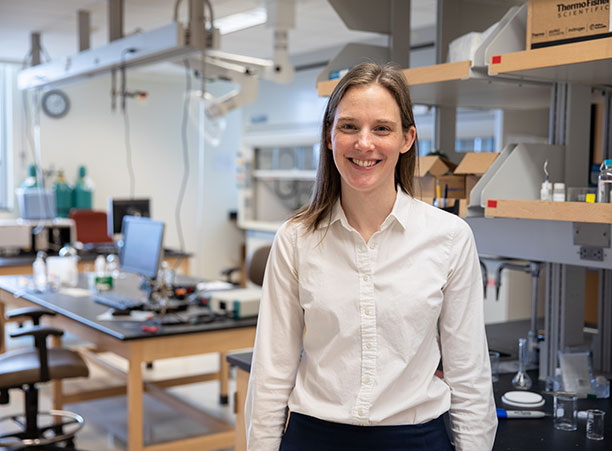
Photo by Avanell Brock
Elizabeth Landis, of the chemistry department, earned a double B.A. in chemistry and mathematics from Williams College and a Ph.D. in chemistry from the University of Wisconsin-Madison. Her research focuses on analytical and materials chemistry. She has been a member of the Holy Cross faculty since 2012.
What are you working on now? My research focuses on understanding how new nanoscale materials differ from more conventional, macroscale materials. We're currently attaching molecules to nanoporous gold, which is like a nanoscale gold sponge. By comparing molecule binding between the nanoporous gold and flat gold surfaces, we hope to understand the role that nanoscale structure plays in chemistry and understand new uses for nanoscale materials.
We see that you have a patent! Can you tell us more about it? In graduate school, I was part of a team that discovered a new reaction for attaching molecules to metal oxide surfaces including titanium dioxide. The reaction formed very stable attachments to the surface and could be useful for creating biosensors like glucose sensors.
Shannon Stock, mathematics
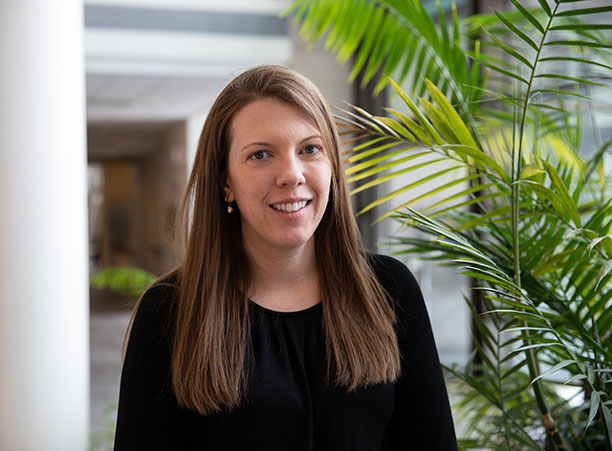
Photo by Avanell Brock
Shannon Stock, of the mathematics and computer science department, earned a B.S. in applied mathematics and an M.S. in biostatistics from the University of California, Los Angeles and a Ph.D. in biostatistics from Harvard University. Her research focuses on the application and development of statistical methods for large, complex clinical studies. She has been a member of the Holy Cross faculty since 2013.
What are you working on now? Several collaborative projects with colleagues at nearby medical schools and research institutes are currently underway. One project includes translational research with Alo Basu, associate professor of psychology, in conjunction with our clinical colleagues and several Holy Cross research students. We are using machine learning to model patterns of genetic risk and metabolic outcomes in schizophrenia. The results from our exploratory study demonstrate the potential utility of genetic screening in personalized clinical decision-making and treatment management.
Why should students be interested in biostatistics? What's your elevator pitch? Biostatistics is a dynamic and engaging field that allows students to apply their quantitative reasoning skills to solve real-world clinical or biomedical research problems. Biostatisticians have the opportunity to delve into a vast and varied number of projects simultaneously, in areas such as oncology, infectious diseases, environmental health, genetics and other exciting frontiers of science. Students trained at liberal arts colleges commonly thrive in this highly collaborative and interdisciplinary work because they are often drawn to the field's larger aims of bettering human health and identifying health disparities as a foundation for social justice.
